How much does it cost to build a helicopter hangar? It will cost between $50,000 to $1,000,000 depending on size and type of material used. When it comes to owning a helicopter, having a secure and reliable place to store it is crucial.
A helicopter hangar is not only a place to store your aircraft but also a space for maintenance and repairs. But, how much does it cost to build a helicopter hangar? Here’s a breakdown of the main factors you need to consider.
Perhaps you’re tired of renting a space for your chopper(s), or maybe you want to protect your investment from the elements. Whatever the reason, the idea of building a helicopter hangar can be daunting.
One of the biggest questions on your mind is probably “How much does it cost to build a helicopter hangar?” Well, you’re in luck because we’ve got the answers you’re looking for.
Interest piqued? Let’s dive into the details. First and foremost, it’s important to understand that building a helicopter hangar is no small feat. It requires careful planning, design, and construction to ensure that your hangar meets your specific needs and requirements.
Some factors that will impact the cost of your helicopter hangar include the size of the hangar, the materials used, and any additional features you may want to include such as insulation, heating/cooling, or a workshop area.
But before we get too ahead of ourselves, let’s take a step back and talk about why building a helicopter hangar is so important. Having a dedicated space for your helicopter(s) not only protects your investment from the elements, but it also provides a safe and secure location for storage and maintenance.
Plus, having your own hangar gives you the convenience and flexibility to access your chopper(s) whenever you need them. Desire to build your own helicopter hangar growing? We’re here to help.
Keep reading to learn more about the cost breakdown of building a helicopter hangar and what factors to consider when planning your own hangar.
Action step: Subscribe to our blog to stay updated on all things helicopter hangars, including tips and tricks for building your own hangar and advice from industry experts.
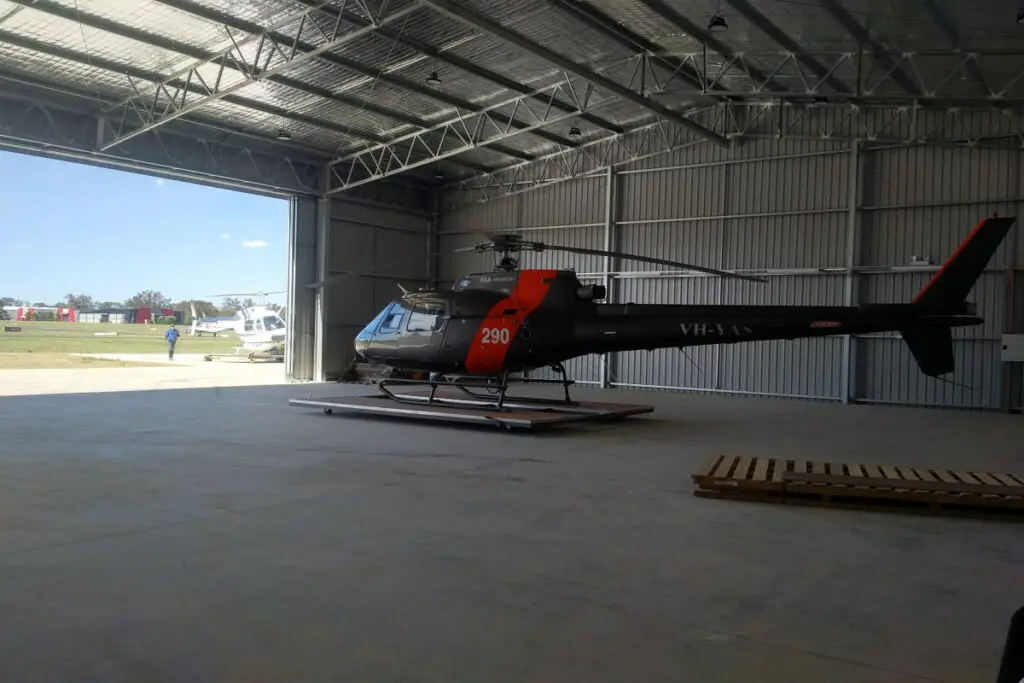
How much does it cost to build a helicopter hangar?
The actual cost of building a helicopter hangar varies widely depending on factors such as location, size, materials, and design. However, on average, it can range from $50,000 to $1 million or more.
Understanding the basics
Before getting into the specifics of building a helicopter hangar, it’s important to understand the basics of what a hangar is and what it’s used for.
A helicopter hangar is a building designed to protect your helicopter from the elements, including weather and theft. It can also be used as a workspace for maintenance and repairs.
When building a helicopter hangar, there are several factors to consider. Here are some important considerations:
1. Size and Layout: The size of your helicopter hangar will depend on the size of your helicopter(s) and how many you plan to store. You will also need to consider the layout of the hangar, which should allow for easy access and maneuverability of the helicopter(s).
2. Location: The location of your helicopter hangar is important. It should be situated in an area that is easily accessible and has enough space for the building and any necessary infrastructure.
It should also be located in an area that is safe from potential hazards such as flooding, high winds, or fire.
3. Foundation and Structure: A strong and sturdy foundation is important for your helicopter hangar. The structure should be designed to withstand the weight of the helicopter(s) and any weather conditions that may occur in the area.
Materials: The materials used to build your helicopter hangar should be of high quality and durable. Steel and concrete are popular choices for their strength and durability.
4. Security: A helicopter hangar should be designed with security in mind. It should have secure doors and windows, as well as an alarm system and surveillance cameras to deter theft.
5. Lighting and Ventilation: Good lighting and ventilation are essential for a safe and functional helicopter hangar. The hangar should have plenty of natural light as well as adequate artificial lighting.
Proper ventilation is important to maintain air quality and prevent the buildup of harmful fumes.
6. Compliance: It’s important to ensure that your helicopter hangar complies with local building codes and regulations. This may include obtaining permits and inspections from local authorities.
Also see: Building A Homemade Helicopter Step-by-Step

Size matters
The size of your helicopter hangar will depend on the size of your helicopter. The larger the helicopter, the larger the hangar.
It’s important to ensure that the hangar is not only big enough to house your helicopter but also has enough space for any additional equipment, such as tools or machinery.
When designing a helicopter hangar, there are a few factors to consider:
1. Helicopter dimensions: The size of your helicopter is the primary factor to determine the hangar size. Be sure to account for the rotor diameter, fuselage length, and height, including any antennas or protruding equipment.
2. Maintenance and storage: You’ll need enough space for routine maintenance tasks and for storing tools, parts, and other necessary equipment.
This may require additional room for workbenches, storage racks, and even a crane system for heavy lifting.
3. Clearance: Allow for a safe clearance around the helicopter, both for maneuvering the aircraft and to prevent accidental damage. Industry recommendations typically suggest at least 5 feet (1.5 meters) of clearance on all sides, though more may be necessary depending on the size of your helicopter and the type of operations you conduct.
4. Hangar doors: Consider the dimensions of the hangar doors to ensure your helicopter can easily be moved in and out. Larger helicopters may require specialized doors, such as sliding or bi-fold doors.
5. Expansion: If you anticipate the need for a larger helicopter in the future or the addition of another aircraft, plan for potential expansion when designing your hangar.
6. Amenities: Depending on your requirements, you may also need space for amenities such as an office, restrooms, or a break room for staff.
As an example, for a small helicopter like the Robinson R44 with a rotor diameter of 33 feet (10 meters) and a fuselage length of 29 feet (8.8 meters), a hangar measuring approximately 40 feet wide x 40 feet long x 15 feet high (12 x 12 x 4.5 meters) could suffice.
However, for a larger helicopter like the Sikorsky S-92 with a rotor diameter of 56 feet (17 meters) and a fuselage length of 68 feet (20.7 meters), a hangar measuring around 75 feet wide x 80 feet long x 25 feet high (23 x 24.5 x 7.6 meters) would be more appropriate.
Keep in mind that these are rough estimates, and it’s always a good idea to consult with an experienced hangar builder or aviation consultant to ensure the proper sizing and design of your helicopter hangar.
Also see: How Much Does It Cost To Build A Helicopter Hangar?
Location
The location of your hangar is also an important factor to consider. You’ll want to choose a location that’s easily accessible and close to where you plan to use your helicopter. You’ll also want to make sure the location has enough space for your hangar and any additional structures you may need.
Additionally, you should also consider the environmental conditions of the location where you plan to place your hangar. You’ll want to make sure the area is not prone to flooding, high winds or other natural disasters that could damage your helicopter and the hangar.
Moreover, the location should have proper ventilation and drainage to prevent any condensation or moisture buildup inside the hangar. It’s also essential to ensure that the location is zoned for aviation use and that you comply with any local regulations and building codes.
Taking all these factors into consideration can help you choose the best location for your hangar and ensure the safety and protection of your helicopter. Your helicopter is a valuable asset, so it’s essential to ensure that the location has proper security measures in place to prevent theft or vandalism.
You may want to consider installing security cameras, alarms, and access control systems to secure your hangar and keep your helicopter safe. Furthermore, it’s important to think about the availability of services and resources in the location you choose.
You’ll need to ensure that there are nearby fueling stations and maintenance facilities to keep your helicopter in top condition. You may also need to consider the availability of trained personnel for any repairs or maintenance tasks.
Finally, it’s a good idea to consider the long-term plans for your helicopter and how they may impact your hangar location. If you plan to expand your helicopter fleet or move to a different area, you’ll want to choose a location that’s flexible and adaptable to your changing needs.
Choosing the right location for your helicopter hangar requires careful consideration of various factors, including accessibility, space, environmental conditions, security, resources, and long-term plans.
By taking these factors into account, you can ensure that your helicopter is well-protected, well-maintained, and ready to take flight whenever you need it.

Materials and design
The materials and design of your hangar will also affect the cost. Depending on your needs, you can choose from a variety of materials, including steel, wood, or concrete.
The design of your hangar will also impact the cost, with more complex designs generally costing more. Additionally, the size of your hangar is a key factor in determining the cost.
The larger the hangar, the more materials and labor will be required to construct it, leading to a higher cost. The location of your hangar is also important, as certain areas may require special permits or have higher labor costs.
Another factor that can impact the cost of your hangar is the type of door you choose. A simple sliding door may be less expensive than a hydraulic door, which requires more complex installation and maintenance.
Additionally, the type of insulation you choose can affect the cost, as some insulation materials are more expensive than others.
The cost of your hangar will also be affected by any additional features or amenities you choose to include. For example, if you want a heated hangar or a bathroom, these will add to the overall cost of construction.
By carefully considering these factors and working with a knowledgeable contractor, you can create a hangar that meets your needs while staying within your budget.
Also see: How To Build A Helicopter At Home?
Site preparation
Site preparation is an essential step in building a helicopter hangar. This includes grading the land, removing any obstacles, and ensuring the site is level. Depending on the condition of the land, site preparation costs can vary.
Additionally, it may be necessary to excavate the land to create a suitable foundation for the hangar. This can involve digging trenches for footings, installing underground utilities, and pouring concrete pads.
Proper site preparation is crucial for ensuring the structural integrity and longevity of the hangar. It also helps to prevent issues such as water damage, erosion, and settling of the foundation over time.
Therefore, it is important to allocate a sufficient budget for site preparation to ensure the project’s success and avoid any unforeseen complications down the line.
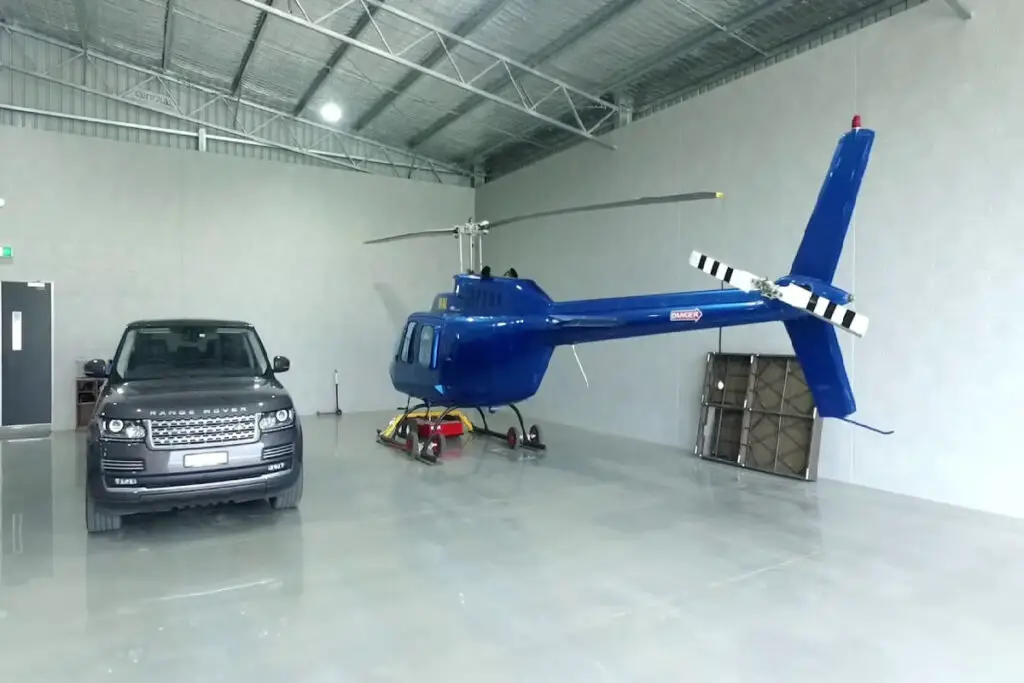
Foundation and framing
Once the site has been prepared, the foundation and framing can begin. The foundation is the base of the hangar and will need to be strong enough to support the weight of the helicopter.
The framing is the skeleton of the hangar and will provide the structure for the walls and roof. After the foundation has been laid, the framing process can begin. This involves constructing a series of vertical columns and horizontal beams that will support the walls and roof.
The framing will need to be strong and durable enough to withstand any potential wind or weather damage, as well as the weight of the helicopter itself. Once the framing is in place, the walls and roof can be added to complete the structure of the hangar.
This process may involve the use of various materials, such as metal panels or concrete blocks, depending on the design and intended use of the hangar.
Proper insulation and ventilation will also need to be considered to ensure a comfortable and safe environment for both the helicopter and any personnel who may be working within the hangar.
With the foundation, framing, walls, and roof all in place, the hangar will be ready to provide a secure and reliable storage space for the helicopter, protecting it from the elements and any potential damage.
Hangar doors
Hangar doors are an essential part of the design and are needed to allow the helicopter to enter and exit the hangar. Depending on the size and design of the hangar, the doors can be either sliding or bi-fold.
Sliding hangar doors are a popular choice for larger hangars since they allow for maximum clearance when opening and closing. They work by sliding along tracks that are installed on either side of the hangar opening.
Bi-fold hangar doors, on the other hand, are commonly used in smaller hangars and have a folding design that allows them to open and close vertically. These doors are more space-efficient and require less headroom than sliding doors.
Regardless of the type of door chosen, proper maintenance and regular inspections are necessary to ensure their safe and reliable operation.
In addition, hangar doors may also include safety features such as sensors to detect obstructions and emergency opening mechanisms. Ultimately, selecting the appropriate hangar door is an important consideration in the design of any helicopter facility.
Also see: Home Built Helicopters
Electrical and plumbing
Electrical and plumbing systems are necessary for a functional helicopter hangar. This includes lighting, heating and cooling, and plumbing for any washrooms or sinks.
In addition to these essential systems, there are also other features that can be added to improve the functionality of a helicopter hangar.
For instance, a ventilation system may be necessary to ensure proper air circulation and prevent the buildup of harmful fumes or gasses.
A fire suppression system can also be installed to quickly extinguish any potential fires and protect the aircraft and personnel within the hangar.
Furthermore, the hangar may require specialized equipment such as hydraulic lifts or cranes to move heavy equipment or make repairs. The hangar’s electrical system must also be capable of handling the power requirements of this equipment.
Additionally, security is an important consideration when designing a helicopter hangar. This may include surveillance cameras, access control systems, and alarm systems to ensure the safety and security of the aircraft and personnel.
Overall, a properly designed and equipped helicopter hangar is crucial to the success and safety of aviation operations. Proper planning and installation of electrical, plumbing, and other necessary systems can help ensure that the hangar is functional, safe, and efficient.

Safety considerations
Safety should always be a top priority when building a helicopter hangar. This includes ensuring the hangar is properly ventilated and fire-resistant. It’s also important to have proper safety equipment, such as fire extinguishers and first aid kits.
In addition to these measures, it’s crucial to establish clear safety protocols and procedures for all personnel who work in and around the helicopter hangar.
This includes providing training on emergency response, evacuation procedures, and safety precautions when handling equipment or performing maintenance tasks.
Another important aspect of ensuring safety in a helicopter hangar is regular maintenance and inspection of the hangar and its equipment.
Any potential hazards or safety issues should be identified and addressed promptly to prevent accidents or injuries.
It’s also important to follow all relevant safety regulations and guidelines set forth by government agencies and industry organizations.
This can help ensure that the helicopter hangar is built and maintained to the highest safety standards and that all personnel are trained and equipped to handle any potential safety issues.
By prioritizing safety in every aspect of the helicopter hangar, from construction to daily operations, you can help prevent accidents and protect the well-being of everyone who works in and around the facility.
Also see: How Much Does It Cost To Build A Helicopter?
Other factors to consider
Other factors to consider when building a helicopter hangar include permits and regulations, insurance, and ongoing maintenance costs.
In order to build a helicopter hangar, it is important to obtain the necessary permits and comply with any regulations related to building and zoning codes.
Depending on the location and size of the hangar, there may also be environmental regulations to consider, such as stormwater management and erosion control.
Additionally, it is important to have adequate insurance coverage for the hangar and any aircraft stored inside, including liability coverage in case of accidents or damage.
Once the hangar is built, ongoing maintenance will be required to ensure that it remains in good condition and continues to provide a safe and secure space for your helicopters. This may include regular inspections, cleaning, and repairs as needed.
It is also important to factor in the cost of utilities such as electricity, heating, and cooling, as well as any security measures that may be necessary to protect the hangar and its contents.
By taking these factors into account, you can ensure that your helicopter hangar is built to meet your needs and will provide many years of reliable service.
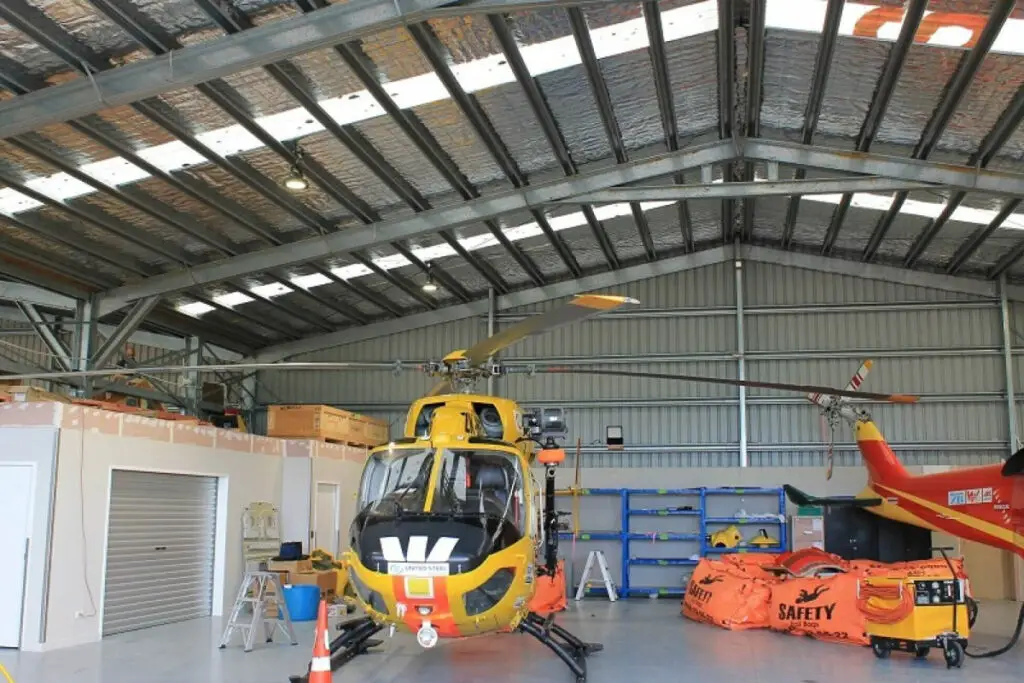
FAQ
1. What is the average cost of building a helicopter hangar?
The average cost of building a helicopter hangar varies widely but can range from $50,000 to $1 million.
2. What factors influence the cost of building a helicopter hangar?
Size, location, materials, labor, permits, and equipment are major factors that influence helicopter hangar construction costs.
3. How much does the size of the helicopter hangar affect the cost?
The size of a helicopter hangar directly affects its cost.
4. Is it cheaper to build a helicopter hangar from scratch or to renovate an existing structure?
It depends on the condition and location of the existing structure compared to building from scratch.
5. Are there any cost-saving measures that can be taken during the construction of a helicopter hangar?
Yes, choosing cost-effective materials, efficient design, and proper insulation can save money during helicopter hangar construction.
Conclusion
In conclusion, building a helicopter hangar requires careful planning and budgeting. The cost of construction varies depending on factors such as the size of the hangar, location, and materials used.
Additionally, there are ongoing maintenance and operational costs to consider. While the initial investment may seem high, the benefits of having a dedicated space to store and maintain your helicopter are invaluable.
Properly designed and constructed hangars also increase the lifespan of your aircraft and improve safety. If you’re considering building a helicopter hangar, make sure to consult with experienced professionals to ensure that you get the best value for your investment.
Also see: Homebuilt Helicopter Kit

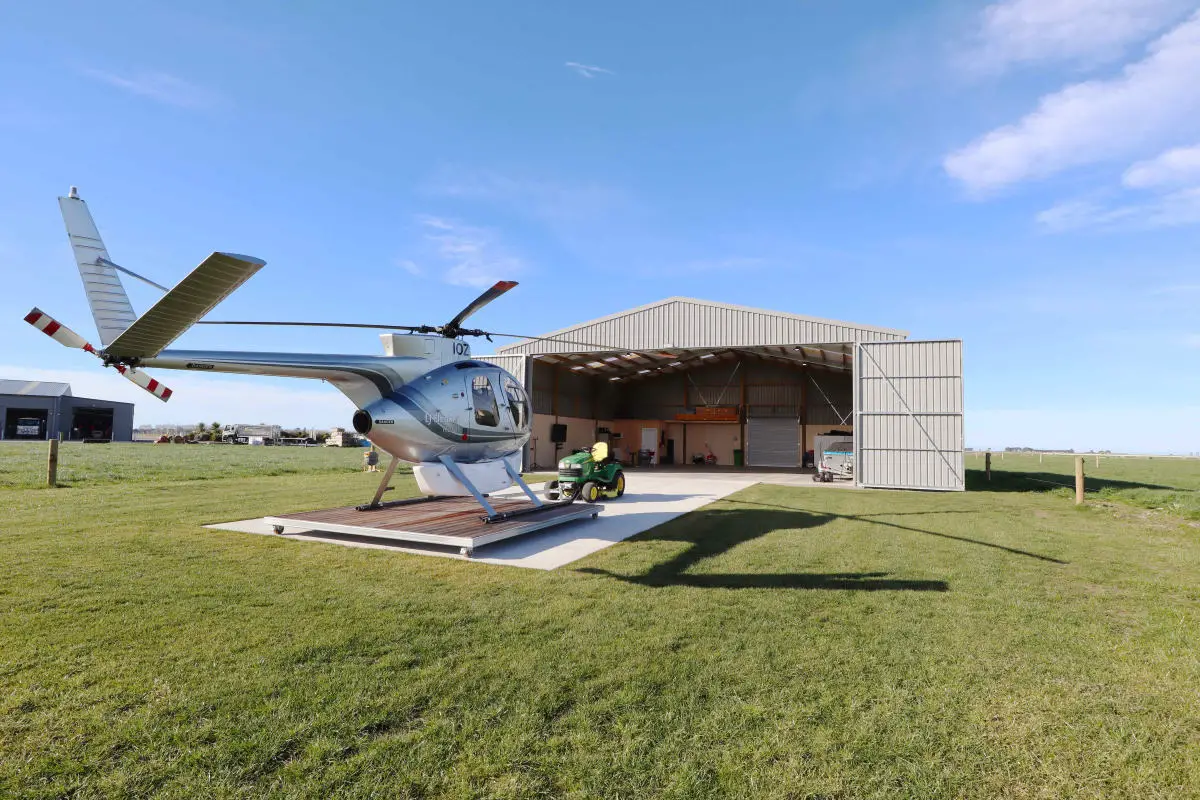





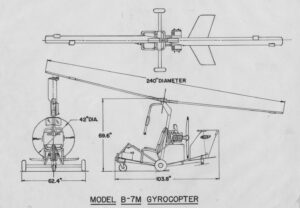



Leave a Reply